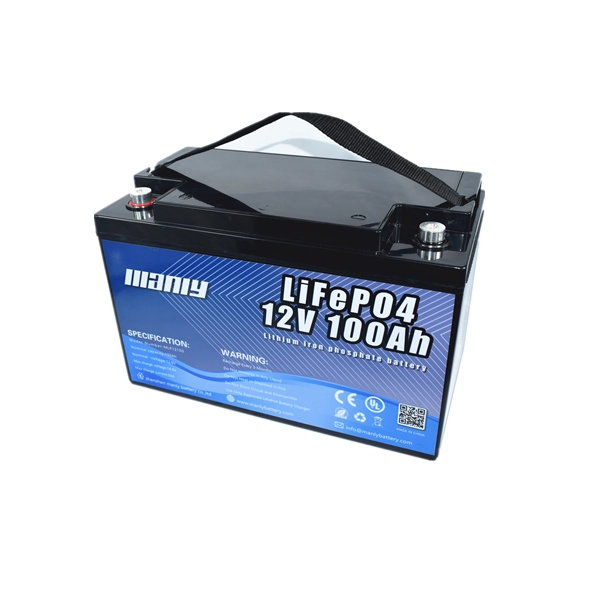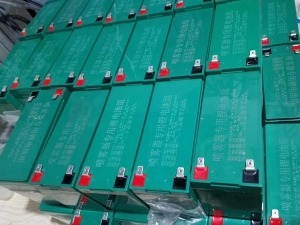Les batteries au lithium ont-elles une mémoire de charge ?
Table des matières
- Les batteries au lithium ont-elles une mémoire de charge ?
- Qu’est-ce que l’effet mémoire de la batterie exactement ?
- Effet mémoire dans les batteries lithium-ion
- Effet mémoire dans d’autres types de batteries
- Impact de l'effet mémoire sur les performances de la batterie au fil du temps
- Prévenir l'effet mémoire dans les batteries
- Dernières pensées
- En savoir plus sur la batterie
- 6 Key Aspects: 12V 200Ah LiFePO4 Battery in RVs – Australian Client Orders 12V 200Ah LiFePO4 Battery in Manly Battery
- What Is Wholesale Trade? A Guide to Lithium Battery Wholesale and Benefits
- South Africa customer 1000pcs 12V 8Ah sprayer lithium battery ,ready for shipment.
- Toyota 2024: Innovations and Economic Challenges

Qu’est-ce que l’effet mémoire de la batterie exactement ?
Leseffet mémoire de la batterie is when a battery seems to "remember" its previous charging cycles. This means the battery might not use all of its energy over time, reducing its total capacity. Originally noticed in older batteries like nickel-cadmium (NiCd) and nickel-metal hydride (NiMH), this effect causes batteries to deliver less power than they actually have.Différences clés entre l'effet mémoire et d'autres problèmes de batterie
Understanding how the memory effect differs from other battery problems is important:- Maintien des charges: The memory effect directly affects how much charge a battery can store. While issues like self-discharge cause a battery to lose power over time, they don't reduce the battery's total capacity like the memory effect does.
- Modèles de charge: The battery memory effect is linked to repetitive charging patterns. If you frequently charge the battery after only partial use, it may "remember" this shorter cycle and not utilize its full capacity in the future.
- Réversibilité: One key aspect of the memory effect is that it's often reversible. Performing several full charge and discharge cycles can reset the battery's memory. In contrast, other issues may be permanent or require special treatments.
- Changements chimiques: The problems associated with the memory effect battery stem from changes in the battery's internal materials, such as alterations in the crystal structure of the electrodes. Other battery issues might arise from different chemical reactions or external factors like temperature.
Effet mémoire dans les batteries lithium-ion
When it comes to modern lithium ion batteries, the memory effect is not as common as it is in older battery technologies. However, this doesn’t mean that lithium ion batteries are completely free from it. Under specific conditions, lithium ion batteries, especially those using lithium iron phosphate (LiFePO4) chemistry, can still experience something similar to the battery memory effect.Comprendre l'effet mémoire de la batterie lithium-ion
For most lithium ion batteries, like those made with NMC or LCO, the memory effect is rare. These batteries generally degrade over time due to natural wear, rather than remembering a specific charging pattern. However, in lithium iron phosphate (LiFePO4) batteries, the voltage curve is very flat, which can confuse the system that measures the state of charge (SoC). This flat voltage curve, when paired with frequent partial charging and discharging, may cause the battery to appear as though it is suffering from a battery memory effect.This effect can lead to errors in how much charge the system thinks the battery holds, resulting in incorrect estimations of the battery's charge level. While the overall impact on capacity is not as significant as in nickel-based batteries, this issue can cause some problems with the battery’s performance, especially in complex systems like electric vehicles.Causes de l’effet mémoire de la batterie lithium-ion
- Cycles de charge incomplets: Les batteries au lithium-ion qui sont constamment chargées après une décharge partielle seulement peuvent commencer à montrer une capacité réduite, imitant l'effet mémoire de la batterie. Cela ne signifie pas qu’ils ont une véritable mémoire comme les anciennes batteries, mais le comportement est similaire.
- Températures de fonctionnement élevées: La chaleur est un autre facteur qui peut aggraver ce problème. L'exposition des batteries lithium-ion à des températures élevées pendant la charge ou la décharge peut accélérer les réactions chimiques à l'intérieur de la batterie, ce qui peut augmenter le risque de ressentir un effet de mémoire. La batterie devient moins efficace et sa capacité à conserver une charge complète est réduite.
- Surcharge et décharge excessive: Bien que les batteries lithium-ion disposent d'une protection intégrée pour éviter la surcharge ou la décharge excessive, des conditions extrêmes peuvent toujours entraîner une perte de capacité à long terme. Une exposition répétée à de telles conditions pourrait donner l’impression que la batterie a un effet mémoire, dans lequel elle ne fournit qu’une charge limitée.
Stratégies d'atténuation de l'effet mémoire des batteries au lithium-ion
There are several strategies to minimize the risk of memory effect in lithium ion batteries:- Effectuer des cycles de charge complets: De temps en temps, c'est une bonne idée de laisser la batterie se décharger complètement avant de la recharger. Cela peut aider à recalibrer le système et à réinitialiser la capacité de la batterie.
- Évitez les températures élevées: Charger ou décharger une batterie dans des conditions très chaudes peut réduire son efficacité et sa durée de vie. Gardez vos batteries à une température stable et modérée pour des performances optimales.
- Maintenance régulière: Faire occasionnellement fonctionner vos batteries lithium-ion pendant un cycle complet de charge et de décharge, un processus parfois appelé conditionnement de la batterie, peut aider à maintenir leur santé et à réduire les effets qui imitent l'effet mémoire.
Effet mémoire dans d’autres types de batteries
While lithium ion batteries may only experience a limited memory effect, it’s much more prominent in older battery technologies. Here’s how it affects various types of batteries:Piles au nickel-cadmium (NiCd)
Nickel-cadmium (NiCd) batteries are notorious for their memory effect. If these batteries are regularly charged before they are fully discharged, they "remember" the shorter charge cycles and lose some of their total capacity. This happens because the crystal structure in the battery's electrodes changes over time with repeated partial charges. As a result, the battery gradually becomes unable to provide its full energy capacity, forcing users to recharge more frequently.To prevent the battery memory effect in NiCd batteries, users are encouraged to fully discharge them before recharging. This practice helps reset the battery’s memory and restore its full capacity.Piles nickel-métal-hydrure (NiMH)
Nickel-metal hydride (NiMH) batteries also suffer from a memory effect, although not as severely as NiCd batteries. The problem occurs when the battery is charged after partial use, leading to a gradual reduction in the battery’s overall capacity. However, NiMH batteries have been improved over the years to reduce this issue, making it less common.Occasionally fully discharging and then recharging these batteries can help reduce the memory effect and prolong their life. It’s also important to store these batteries in cool, dry places to maintain their performance.Batteries au plomb
Lead-acid batteries, commonly used in vehicles and backup power systems, can also experience a form of memory effect. This usually happens when the battery is consistently not fully charged, causing sulfate crystals to form on the battery plates. These crystals reduce the battery’s capacity and efficiency over time. While not the same as the battery memory effect seen in NiCd or NiMH batteries, this problem is sometimes referred to as a "sulfation memory."Regularly charging lead-acid batteries to their full capacity and performing periodic maintenance, such as equalizing charges, can help prevent this issue.Piles alcalines
Alkaline batteries, which are non-rechargeable, typically do not suffer from a memory effect. However, rechargeable alkaline batteries can, under certain circumstances, develop a memory-like problem if not fully discharged before being recharged. Following the manufacturer’s guidelines for charging can help maintain their performance.Piles zinc-carbone
Zinc-carbon batteries are another type of non-rechargeable battery that do not experience a memory effect. Since these batteries are designed for single use, they are discarded once their energy is depleted. Proper storage and usage can ensure they last as long as possible, but they do not suffer from capacity loss due to charging patterns.Impact de l'effet mémoire sur les performances de la batterie au fil du temps
The memory effect can have several negative impacts on battery performance, especially over time. As batteries lose their capacity due to this effect, their efficiency and usability decline. Below are some of the key ways the battery memory effect impacts overall performance:Capacité réduite
One of the most noticeable effects of the memory effect is the reduction in the battery's overall capacity. When a battery "remembers" shorter charging cycles, it begins to store less energy than its full potential. This can lead to the battery running out of charge faster, requiring more frequent recharging. For example, a phone or laptop battery affected by the memory effect might last only a fraction of the time it used to, which can be frustrating for users who depend on long-lasting battery life.Temps d'utilisation plus court
As a result of reduced capacity, the battery memory effect also shortens the time a battery can be used before it needs to be recharged. Devices like laptops, smartphones, or cordless tools may operate for much shorter periods, which can be highly inconvenient, especially when constant access to charging isn’t possible. This shortened usage time can be particularly disruptive in critical applications such as medical devices or emergency backup systems.Augmentation de la fréquence de charge
With the battery memory effect, users often find themselves charging their batteries more frequently. This increased charging frequency not only adds inconvenience but can also accelerate wear and tear on the battery. Lithium ion batteries, for example, have a limited number of charge cycles, so frequent recharging due to memory effects can shorten the battery's lifespan even more quickly.Efficacité inférieure
As batteries lose their ability to hold a full charge, they also become less efficient. A battery affected by the memory effect might take longer to charge, but then discharge more quickly than normal. This inefficiency can lead to higher energy costs, especially for industrial or commercial operations that rely heavily on battery-powered equipment. The loss of efficiency can also mean more frequent interruptions in productivity when batteries need to be recharged or replaced.Potentiel de surchauffe
The increased frequency of charging, combined with reduced efficiency, can sometimes cause batteries to overheat. This risk is particularly concerning for lithium ion batteries, which, if exposed to high temperatures or improper charging, can become unstable. Memory effect problems could indirectly increase the risk of overheating, particularly in devices that are used intensively and require frequent recharges. Proper battery management is essential to avoid this dangerous outcome.Prévenir l'effet mémoire dans les batteries
Although the memory effect can negatively impact battery performance, there are several ways to prevent or reduce this issue. These preventive measures help ensure that batteries maintain their full capacity and perform optimally for as long as possible.Effectuer des cycles de charge complets
One of the most effective ways to prevent the battery memory effect is to regularly let the battery discharge completely before recharging it. This helps to reset the battery’s capacity and prevent it from "remembering" shorter charging cycles. For example, allowing your phone or laptop battery to run down to a low level before fully charging it can help extend its lifespan.It’s important to note that this practice is especially useful for older battery types like NiCd and NiMH, but even lithium ion batteries can benefit from occasional full charge cycles to recalibrate their charging systems.Évitez la charge partielle
Consistently charging a battery when it is only partially depleted can increase the risk of developing a memory effect battery. By waiting until the battery's charge is sufficiently low before plugging it in, you can help prevent this effect from taking hold. For instance, rather than charging your device every time it drops to 80% or 90%, wait until it falls below 30% or 20% for a more complete cycle.This is particularly relevant for batteries used in electric vehicles, tools, or other equipment that undergo frequent charging. Following proper charging patterns will maximize the battery’s useful life.Utilisez un équipement de chargement approprié
Using the correct charger for your device is another critical step in avoiding the battery memory effect. Chargers are specifically designed to provide the appropriate voltage and current for different types of batteries. Using a low-quality or incompatible charger can lead to improper charging, which might increase the likelihood of memory issues.Stick to the manufacturer’s recommended charging equipment to ensure your battery receives the correct charge. For lithium ion batteries, in particular, this can prevent capacity loss and extend the battery's performance over time.Évitez les températures extrêmes
Extreme heat or cold can exacerbate battery problems, including the battery memory effect. Batteries operate best at moderate temperatures, and exposing them to harsh conditions can cause chemical reactions that damage the internal structure. High temperatures can accelerate the chemical degradation inside the battery, while freezing temperatures may reduce the battery's ability to hold a charge.To prevent this, avoid leaving batteries in environments where they may be exposed to extreme conditions, such as inside a hot car or in direct sunlight. Keeping the battery within a safe temperature range helps maintain its health and performance.Calibrez régulièrement votre batterie
Many modern devices have built-in battery management systems, but performing manual calibration from time to time can still be helpful. Calibrating involves allowing the battery to fully discharge and then recharging it to 100%. This practice resets the device’s battery management system and helps provide more accurate readings of the battery’s capacity, reducing the impact of the battery memory effect.For devices like laptops or smartphones, this calibration can be done every few months to keep the battery working properly and ensure accurate charge level reporting.Suivez les directives du fabricant
Manufacturers provide specific instructions on how to best care for batteries. Following these guidelines can help prevent the memory effect and extend the battery’s lifespan. Instructions might include details on charging cycles, temperature limits, and storage conditions. By adhering to these recommendations, you can reduce the risk of developing the battery memory effect and other common battery issues.Utiliser les outils de gestion de la batterie
Many devices come with built-in battery management tools that optimize charging cycles and help prevent memory issues. These tools monitor the battery’s charge level, temperature, and overall health, making it easier to avoid problems like the memory effect. Check your device’s settings to see if it has any battery optimization features and make sure they are enabled for the best performance.Dernières pensées
In conclusion, understanding and managing the battery memory effect is essential for maximizing battery performance and longevity. While this effect is more commonly associated with older battery technologies like nickel-cadmium (NiCd) and nickel-metal hydride (NiMH) batteries, it can still occur in some cases with modern lithium ion batteries. Following best practices for charging, avoiding extreme temperatures, and using proper equipment can significantly reduce the likelihood of encountering the memory effect.For lithium ion batteries, the battery memory effect is less of a concern compared to NiCd or NiMH batteries, but partial charging cycles and high temperatures can still lead to capacity reduction over time. By regularly performing full charge cycles and keeping the battery within safe temperature ranges, users can minimize the risk of memory effect battery issues and ensure that their devices last longer between charges.It’s also important to remember that advancements in battery management systems and technology have made it easier to prevent the battery memory effect in modern batteries. Many devices come equipped with built-in tools to optimize charging and prevent overcharging, which helps keep the battery in good health.In summary, by understanding how the memory effect works and taking proactive steps to avoid it, you can extend your battery’s lifespan and maintain its performance over time. Proper maintenance, following manufacturer guidelines, and using high-quality charging equipment are all key factors in ensuring that your battery continues to operate efficiently without falling victim to the battery memory effect.En savoir plus sur la batterie
...




















